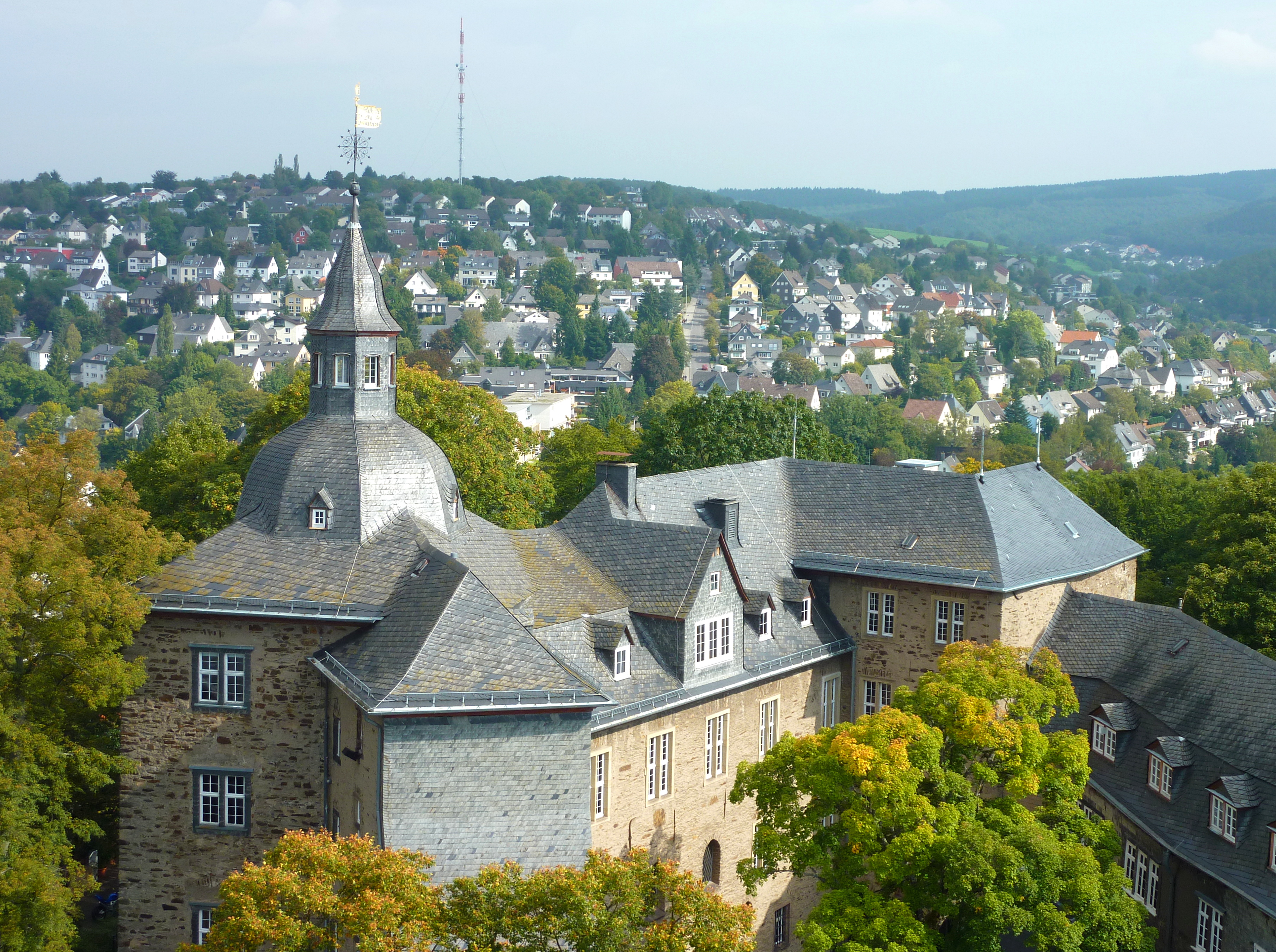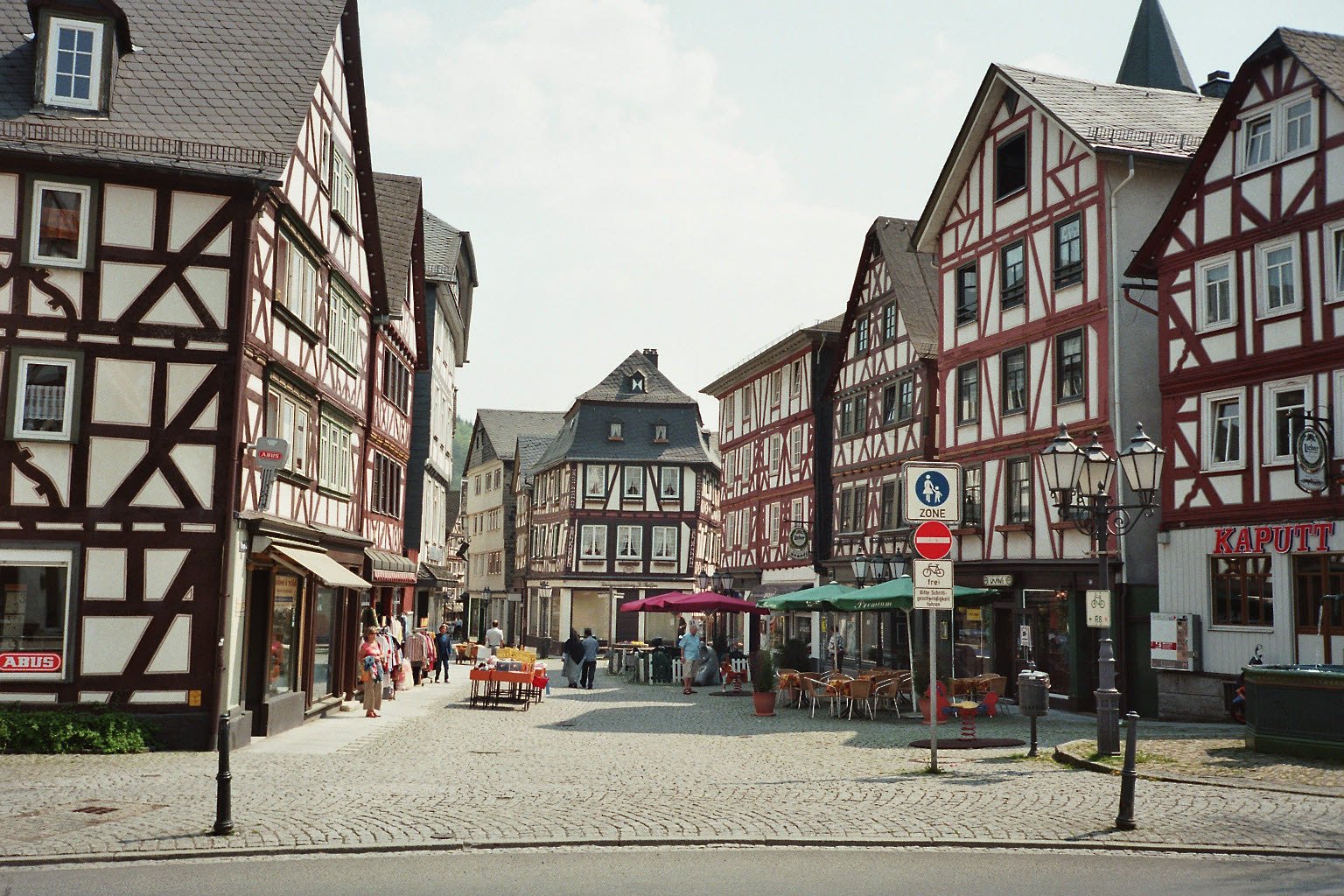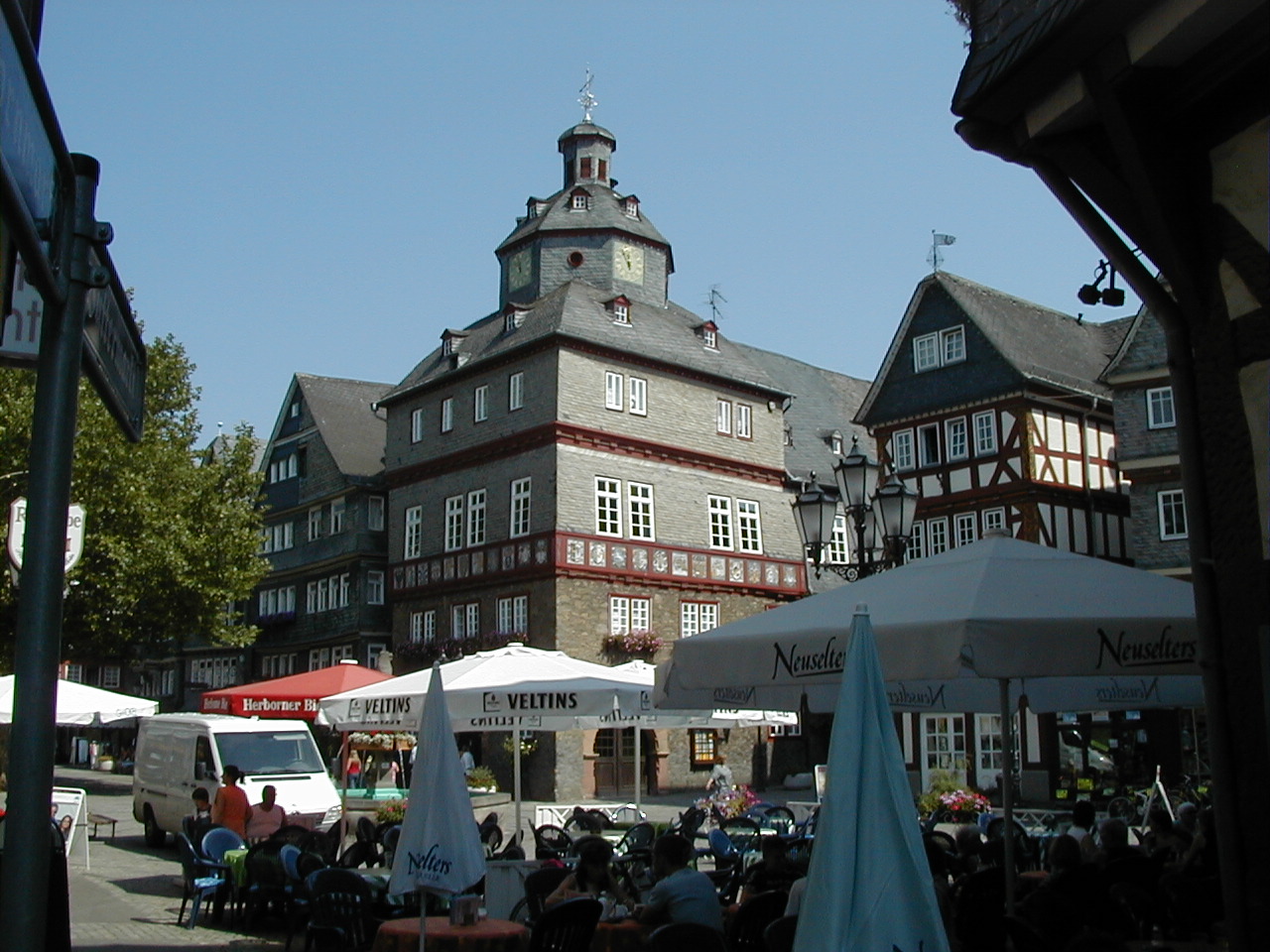|
Adelaide Of Vianden
Countess Adelaide of Vianden (d. 30 September 1376), german: Adelheid Gräfin von Vianden, was a Countess from the House of Vianden, the cadet branch of the House of Sponheim that ruled the County of Vianden, and through marriage Countess of Nassau-Siegen. She acted as regent of the County of Nassau-Siegen for her eldest son in the period 1351–1362. She is described as a clever and energetic woman, endeavoured to gradually settle the numerous feuds inherited by her and her son with the local noble families, the powerful lords of , and , although she herself did not disdain to take up the gauntlet forced upon her on one occasion or another. On the other hand, she also resolved many of the pledges entered into by her husband. In the underdeveloped County of Nassau-Siegen, where the local nobility thought they had a free hand, she kept the reins tight.Lück (1981), p. 22. Biography Adelaide was the only daughter of Count Philip II of ViandenDek (1970), p. ... [...More Info...] [...Related Items...] OR: [Wikipedia] [Google] [Baidu] |
Nassau-Siegen
Nassau-Siegen was a principality within the Holy Roman Empire that existed between 1303 and 1328, and again from 1606 to 1743. From 1626 to 1734, it was subdivided into Catholic and Protestant parts. Its capital was the city of Siegen, founded in 1224 and initially a condominium jointly owned by the archbishopric of Cologne and Nassau. It was located some 50 km east of Cologne, and it contained the modern localities of Freudenberg, Hilchenbach, Kreuztal, Siegen, and Wilnsdorf. First Nassau-Siegen (1303-1328) Nassau-Siegen was first created when the sons of Otto I divided their inheritance: * Henry received Nassau-Siegen * Emicho received Nassau-Hadamar * John received Nassau-Dillenburg John died childless in 1328 and Henry inherited Nassau-Dillenburg. Henry moved to Dillenburg and his descendants are known as the Nassau-Dillenburg line. Second Nassau-Siegen (1606-1743) After John VI of Nassau-Dillenburg died in 1606, Nassau-Dillenburg was divided among his f ... [...More Info...] [...Related Items...] OR: [Wikipedia] [Google] [Baidu] |
Gerard III, Count Of Guelders
Gerard III of Guelders (1185 – 22 October 1229) was the Count of Guelders and Zutphen from 1207 until his death in 1229. He was a son of Count Otto I of Guelders, and is sometimes called Gerard IV or Gerard V. Gerard married Margaretha of Brabant, the daughter of Duke Hendrik I of Brabant and Matilda of Flanders, Duchess of Brabant, in 1206. Life Gerard was an influential knight in the court of the emperor Frederick II, but fell out of grace and the emperor destroyed Roermond in 1213 after a conflict between them. He fought the Bishop of Utrecht Otto II of Lippe over Salland but supported the Bishop in the Battle of Ane. He was captured in this battle in 1227. The chronicle of Johannes de Beke mentions that Gerard was killed in battle. Another source mentions that Gerard was killed in a battle at Zutphen in 1229.Kronijk van Arent toe Bocop, p. 116. Family Gerard was a son of Count Otto I of Guelders and Richardis of Bavaria. He married Margaret of Brabant, the daugh ... [...More Info...] [...Related Items...] OR: [Wikipedia] [Google] [Baidu] |
City
A city is a human settlement of notable size.Goodall, B. (1987) ''The Penguin Dictionary of Human Geography''. London: Penguin.Kuper, A. and Kuper, J., eds (1996) ''The Social Science Encyclopedia''. 2nd edition. London: Routledge. It can be defined as a permanent and densely settled place with administratively defined boundaries whose members work primarily on non-agricultural tasks. Cities generally have extensive systems for housing, transportation, sanitation, utilities, land use, production of goods, and communication. Their density facilitates interaction between people, government organisations and businesses, sometimes benefiting different parties in the process, such as improving efficiency of goods and service distribution. Historically, city-dwellers have been a small proportion of humanity overall, but following two centuries of unprecedented and rapid urbanization, more than half of the world population now lives in cities, which has had profound consequences for g ... [...More Info...] [...Related Items...] OR: [Wikipedia] [Google] [Baidu] |
Pledge (law)
A pledge is a bailment that conveys possessory title to property owned by a debtor (the ''pledgor'') to a creditor (the ''pledgee'') to secure repayment for some debt or obligation and to the mutual benefit of both parties. The term is also used to denote the property which constitutes the security. The pledge is a type of security interest. Pledge is the ''pignus'' of Roman law, from which most of the modern European-based law on the subject is derived, but is generally a feature of even the most basic legal systems. It differs from hypothecation and from the more usual mortgage in that the pledge is in the possession of the pledgee. It is similar, however, in that all three can apply to personal and real property. A pledge of personal property is known as a pawn and that of real property is called an antichresis. In earlier medieval law, especially in Germanic law, two types of pledge existed, being either possessory (cf. Old English ''wed'', Old French ''gage'', Old High Germ ... [...More Info...] [...Related Items...] OR: [Wikipedia] [Google] [Baidu] |
Gerlach I, Count Of Nassau
Gerlach I of Nassau (1271 – 7 January 1361), Count of Nassau in Wiesbaden, Idstein, Weilburg, and Weilnau. He was a son of Adolf of Nassau, elected King of the Romans, and Imagina of Isenburg-Limburg. Family and children He was married two times. First, 1307 with Agnes, a daughter of Agnes of Bavaria, Margravine of Brandenburg-Stendal and her first husband Henry the Younger of Hesse, and hence a granddaughter of Landgrave Henry I "the Child" of Hesse and had the following children: # Adolph I, Count of Nassau-Wiesbaden-Idstein (1307 – 17 January 1370, Idstein). # John I, Count of Nassau-Weilburg (1309 – 20 September 1371, Weilburg). # Gerlach (1322 – 12 February 1371, Aschaffenburg), Archbishop of Mainz. # Adelheid (d. 8 August 1344), married 1329 to Ulrich III, Lord of Hanau. # Agnes, a nun at Klarenthal Abbey. # Elisabeth (ca. 1326–ca. 1370), married before 16 August 1326 to Louis of Hohenlohe. # Marie (d. 1366), married before 1336 to Konrad of Weinsberg. Second ... [...More Info...] [...Related Items...] OR: [Wikipedia] [Google] [Baidu] |
Rupert I, Elector Palatine
Rupert I "the Red", Elector Palatine (; 9 June 1309, Wolfratshausen – 16 February 1390, Neustadt an der Weinstraße) was Count Palatine of the Rhine from 1353 to 1356, and Elector Palatine from 10 January 1356 to 16 February 1390. He was the son of Rudolf I, Duke of Bavaria and Mechtild of Nassau, the daughter of Adolf of Nassau-Weilburg, King of Germany. With the death of his brother, Rudolf II, on 4 October 1353, he inherited his domains and became sole Count for the territory, whereas they had previously shared that privilege. The Golden Bull of 1356 guaranteed the Palatinate the right of participating in the election of the Holy Roman Emperor. Previous Counts Palatine had participated in other Imperial elections. In 1386, Rupert founded Heidelberg University, the third university in the Holy Roman Empire, which was named after him. Rupert was married twice: firstly to Elisabeth, Countess of Namur (daughter of John I, Marquis of Namur), secondly to Beatrix of Jülich- ... [...More Info...] [...Related Items...] OR: [Wikipedia] [Google] [Baidu] |
Count Palatine
A count palatine (Latin ''comes palatinus''), also count of the palace or palsgrave (from German ''Pfalzgraf''), was originally an official attached to a royal or imperial palace or household and later a nobleman of a rank above that of an ordinary count. The title originated in the late Roman Empire. In the Middle Ages especially and into modern times, it is associated with the Holy Roman Empire."palatine, adj.1 and n.1". OED Online. June 2019. Oxford University Press. https://www.oed.com/view/Entry/136245?redirectedFrom=count+palatine& (accessed July 31, 2019). The office, jurisdiction or territory of a count palatine was a county palatine or palatinate. In England, the forms earl palatine and palatine earldom are preferred. Importance of a count palatine in medieval Europe ''Comes palatinus'' This Latin title is the original, but is also pre-feudal: it originated as a Roman ''Comes'', which was a non-hereditary court title of high rank, the specific part ''palatinus'' bein ... [...More Info...] [...Related Items...] OR: [Wikipedia] [Google] [Baidu] |
Castle
A castle is a type of fortified structure built during the Middle Ages predominantly by the nobility or royalty and by military orders. Scholars debate the scope of the word ''castle'', but usually consider it to be the private fortified residence of a lord or noble. This is distinct from a palace, which is not fortified; from a fortress, which was not always a residence for royalty or nobility; from a ''pleasance'' which was a walled-in residence for nobility, but not adequately fortified; and from a fortified settlement, which was a public defence – though there are many similarities among these types of construction. Use of the term has varied over time and has also been applied to structures such as hill forts and 19th-20th century homes built to resemble castles. Over the approximately 900 years when genuine castles were built, they took on a great many forms with many different features, although some, such as curtain walls, arrowslits, and portcullises, were ... [...More Info...] [...Related Items...] OR: [Wikipedia] [Google] [Baidu] |
Löhnberg
Löhnberg is a municipality north of Weilburg in Limburg-Weilburg district in Hesse, Germany. Geography Location Löhnberg lies between Wetzlar and the district seat of Limburg an der Lahn. Neighbouring communities Löhnberg borders in the north on the community of Greifenstein, in the east on the towns of Leun and Braunfels (all three in the Lahn-Dill-Kreis), in the south on the town of Weilburg, and in the west on the communities of Merenberg and Mengerskirchen (all three in Limburg-Weilburg). Constituent communities Löhnberg's ''Ortsteile'' are Löhnberg (administrative seat), Niedershausen, Obershausen and Selters. History All three constituent communities had their first documentary mention in the late 13th or early 14th century, although in Selters's case it is rather unclear as the village has the same name as both Selters in Rhineland-Palatinate and Selters in the Taunus. A document from 1317, however, can unequivocally be said to refer to Selters an der L ... [...More Info...] [...Related Items...] OR: [Wikipedia] [Google] [Baidu] |
Haiger
Haiger is a country town in the Lahn-Dill-Kreis in Hesse, Germany. The nearest city is Siegen, about 25 km north of Haiger. Geography Location Haiger lies about 5 km west of Dillenburg, and 20 km southeast of Siegen on the eastern edge of the Westerwald range, near where the three states of Hesse, North Rhine-Westphalia and Rhineland-Palatinate all share a common point. It is the district's northernmost town. The river Dill rises north of the constituent community of Offdilln. Neighbouring communities To the North Haiger borders with the town of Netphen ( Siegen-Wittgenstein in North Rhine-Westphalia) and the community of Dietzhölztal, to the east with the community of Eschenburg and the town of Dillenburg, to the south with the community of Breitscheid (all in the Lahn-Dill-Kreis), and to the west with the communities of Burbach and Wilnsdorf (both in the Siegen-Wittgenstein district of North Rhine-Westphalia). Constituent communities Following a local govern ... [...More Info...] [...Related Items...] OR: [Wikipedia] [Google] [Baidu] |
Dillenburg
Dillenburg, officially Oranienstadt Dillenburg, is a town in Hesse's Gießen (region), Gießen region in Germany. The town was formerly the seat of the old Dillkreis district, which is now part of the Lahn-Dill-Kreis. The town lies on the German-Netherlands, Dutch holiday road called the Orange Route, joining towns, cities and regions associated with the House of Orange-Nassau, as well as on the German Timber-Frame Road and the Rothaarsteig hiking trail. Geography Location Dillenburg lies on the eastern edge of the Westerwald range in the narrow valley of the river Dill (river), Dill, which flows from Hesse-Westphalia border to Wetzlar, emptying into the Lahn. Neighbouring communities Dillenburg borders in the north on the community of Eschenburg, in the east on the community of Siegbach, in the south on the town of Herborn (Hesse), Herborn, and the community of Breitscheid (Hesse), Breitscheid, and in the west on the town of Haiger (all in the Lahn-Dill-Kreis). Const ... [...More Info...] [...Related Items...] OR: [Wikipedia] [Google] [Baidu] |
Herborn, Hesse
Herborn () is a historic town on the Dill in the Lahn-Dill district of Hesse in Germany. Before World War I, it was granted its own title as ''Nassauisches Rothenburg''. The symbol or mascot of this town is a bear. Scenic attractions include its half-timbered houses; Herborn is located on the German Timber-Frame Road. Herborn hosted the 26th ''Hessentag'' state festival in 1986, and the 56th Hessentag in 2016. Geography The town's coordinates are . It has an area of 64 km² (24 mi²), of which 28 km² (11 mi²) is forest. Herborn is connected by the A45 motorway ( E40/ E41) with Siegen, Wetzlar, and Gießen. Neighbouring communities Herborn is bordered on the north by the town of Dillenburg, on the northeast by the community of Siegbach, on the east by the community of Mittenaar, on the southeast by the community of Sinn, on the south by the community of Greifenstein, and on the west by the communities of Driedorf and Breitscheid (all in the Lahn-Dill-Kreis) ... [...More Info...] [...Related Items...] OR: [Wikipedia] [Google] [Baidu] |






